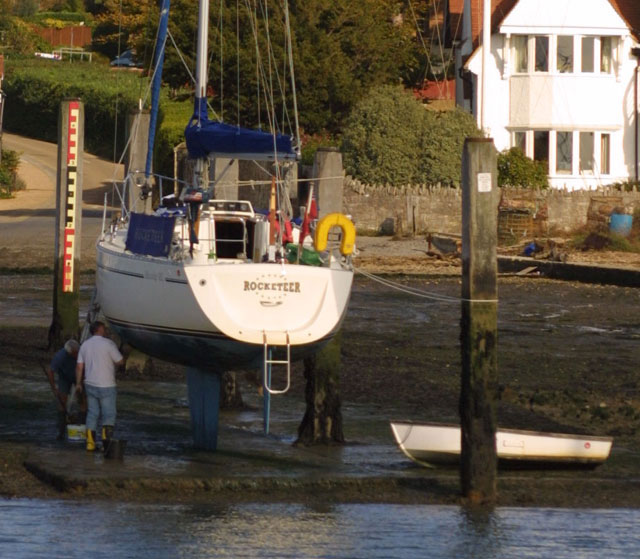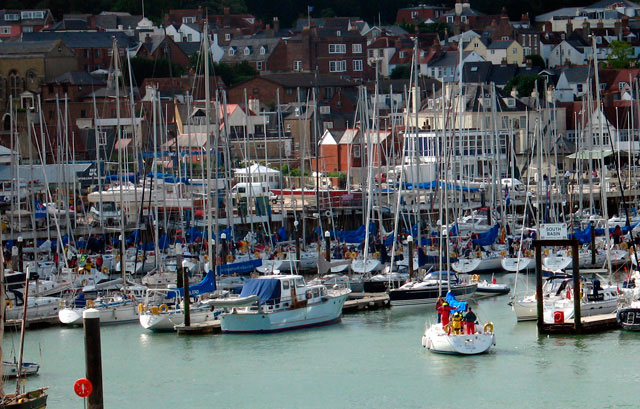Before purchasing, financing or operating any boat, it’s worth every penny to enlist a thorough professional report before making any rash decisions. For even the most seasoned boat buyers and those who come from marine engineering/boatyard backgrounds, it’s still vital to have a fresh pair of eyes that are immune from the rose-tinted spectacles. The boating world is costly enough, without the potential pitfalls or arising problems that can come after what should be the best day of your life. Rife with questions, we ask Rupert Keyzar, the director of Anchor House Marine Surveys about what to keep in mind when planning for viewings and sea trials.
What are some of the most frequently asked questions you receive in regards to boat surveys?
We, surveyors, are asked a multitude of questions - and this in itself depends on whether the yacht is built from GRP, wood, steel or aluminium. But for the sake of this article, the answers in this section relate mainly to GRP yachts.
Osmosis
Osmosis is one of the most commonly asked questions. This is an issue that is very wide-ranging in scope but if you see blisters forming then the size of any blister will tell you its potential severity. Small, pimple type blisters that can be popped are more likely than not to be surface deep blisters lying between the matting and gelcoat and not of any major concern and in many cases are due to poor initial layup in the mould. Where you have osmosis deep in the matting then this is naturally going to cause a larger blister rather than a pimple type as there is more material above it to push up. Cored or sandwich structures where the GRP has separated from the central core material such as balsa - delamination - can sometimes appear as a large, slightly raised area. However, if the delamination is very slight then there will be no clear visible sign and for checking this, hammer sounding is used. Good surveyors will always be able to tell you the condition of a hull and structure so you should be able to buy (or not!) with confidence.
Hull Structure
Many people ask about hull structural issues. For yachts with bonded frames, stringers, floors etc then you are on the lookout for movement of these parts which can show up as cracks/splits along the join of the bonded area. If the exterior of the yacht has had any significant impact or even an area of repair, then always check the same area internally. If the yacht has a deck tray or liner bonded to the hull, then you are looking for separation around the bonded join which in many cases can be best seen in the saloon bilge around the keel area and seacock areas in various places.
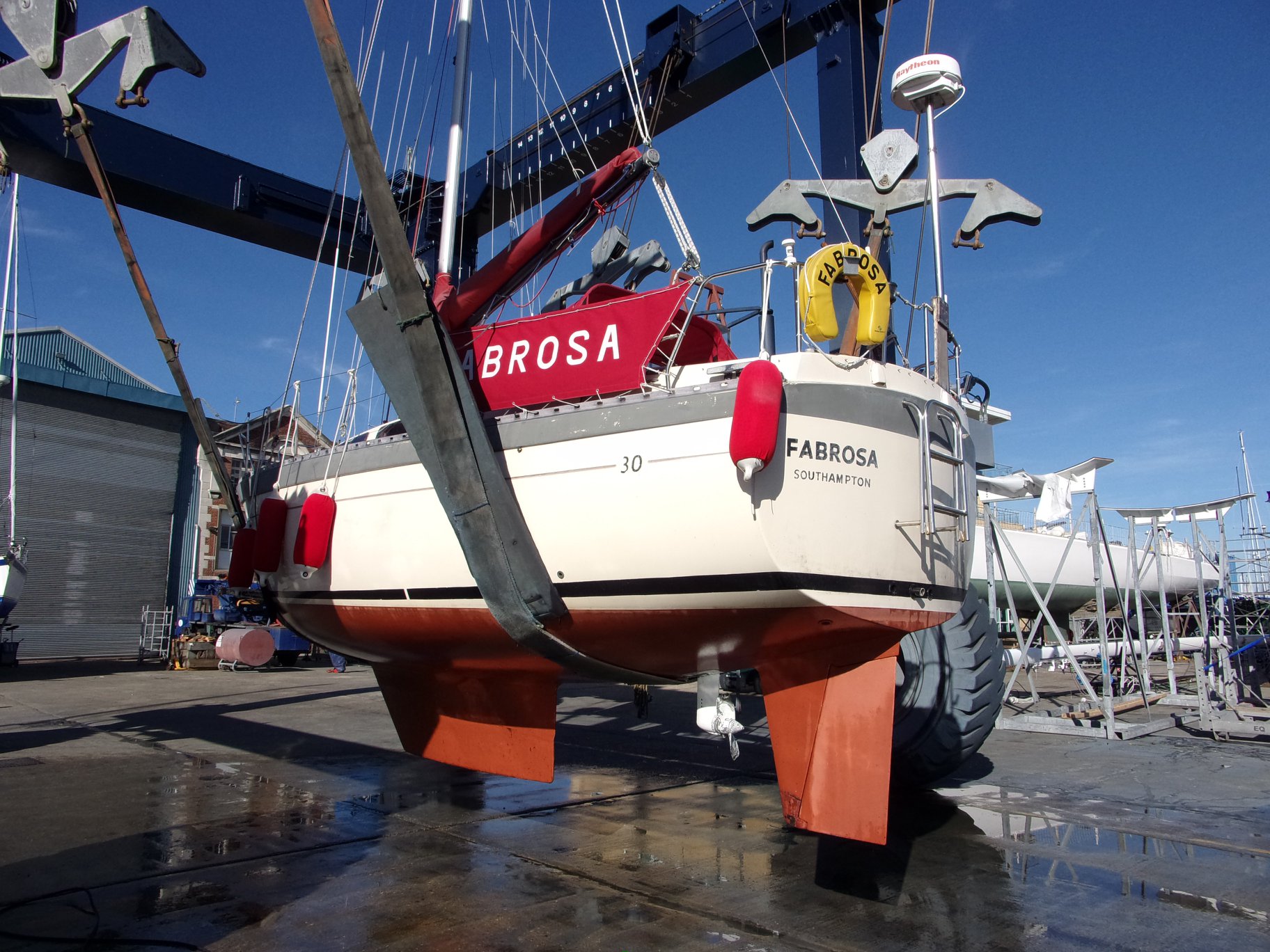
Keel
For sailing yachts, the keel is always a big issue. There are numerous types of keel but they generally fall into two camps, bolt-on and encapsulated keels. This is another wide-ranging area but for bolt-on keels, check for cracks along the keel palm to hull join which can indicate movement especially if there are any signs of rust weeping from the crack. Internally, check for any saltwater ingress, condition of the bolts and fixings as well as any cracks in the keel well base and sidewall. For encapsulated keels, I remember seeing one where the GRP had been worn away to the point where the internal ballast material was showing in areas - so always check for this.
Seacocks and fittings
Another big issue that is not known by many is the material used in seacocks and skin fittings.
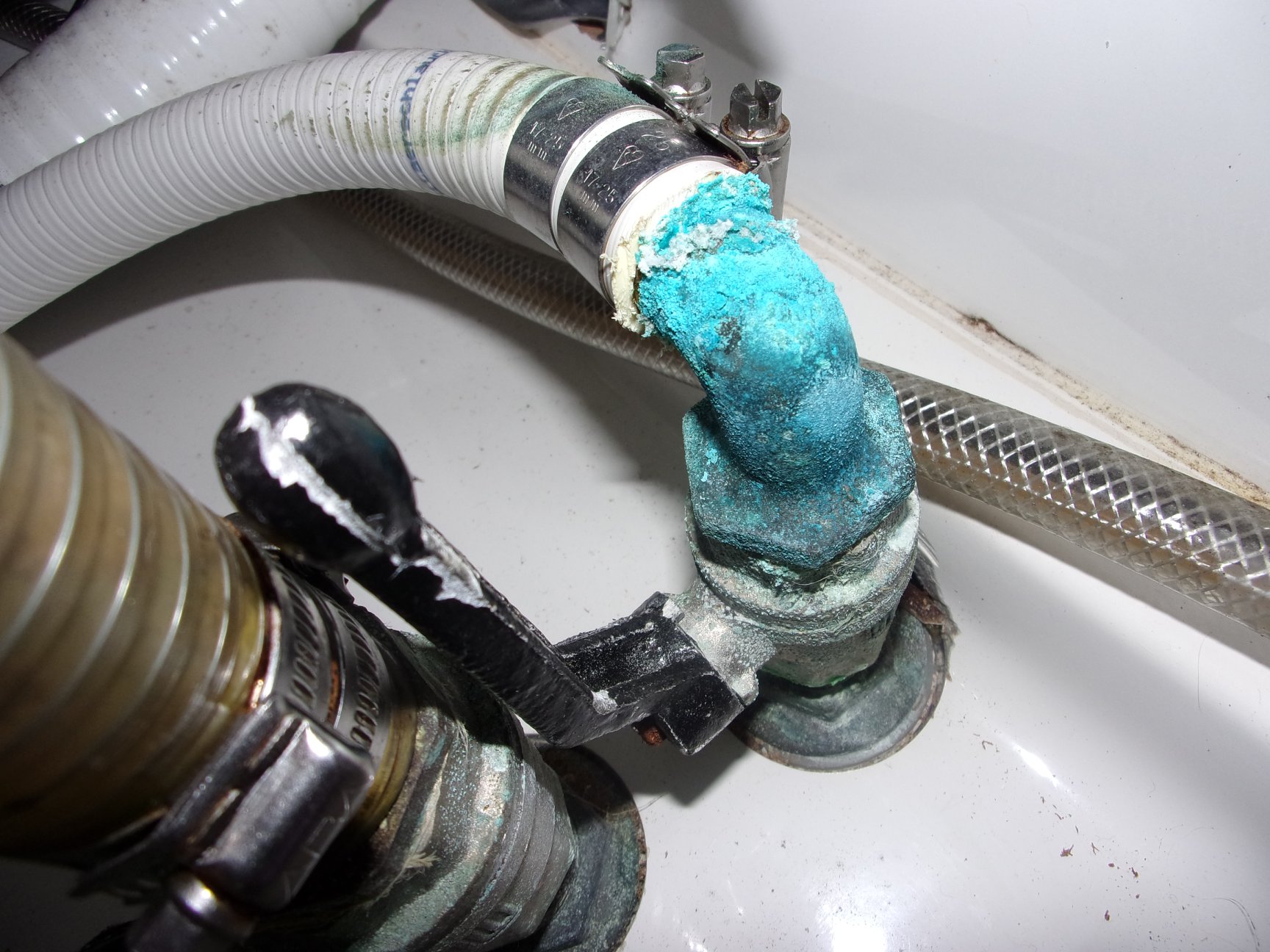
"To put it simply, only ever use either pure bronze skin fittings and seacocks or dezincification resistant brass or 'DZR' types."
Bronze seacocks are obvious - pricey, but always worth the expense. 'DZR' types will be marked 'CR' (corrosion resistant) or with the designation 'CW602N'. NEVER use 'CW617N' marked skin fittings and seacocks as they are brass only and will always corrode away quite quickly. From a visual point of view, if you can't see any markings then if the colour of the seacock is silvery in nature it will almost certainly be a brass only type, so change it - 'DZR' types will be more gold looking in nature.
What areas in order of priority need to be looked into and evidenced for pre-purchase?
In a word, everything. There is an order of priority though and this can be simplified to hull and structure/machinery/electrics/domestic systems/furnishings. This order relates to the cost of repairing or replacing the item in question - broken bilge pumps are not as expensive to replace as a worn engine as an example. Of course, this is a very simplified list as a small hull repair will be cheaper than buying a new engine, but the principle of priority is a good place to start when looking at buying a used yacht.
For sailing yachts, the mast and rigging are of special concern. The general rule is that rigging - especially the multiple strand wire type - has a useful shelf life of 10 years. That doesn’t mean full replacement across the board though if 10 years is up, as a lightly stressed rig should last longer than a heavily stressed rig. But from an initial enquiry point of view, the rigging should have been replaced or at least fully inspected in the past 10 years as a starting point. If not, it might be advised to have the mast and rigging inspected by a rigging specialist as most surveyors will only inspect this aspect from deck level, though some surveyors will use binoculars to check the mast/rigging upper connections.
How can you ensure you receive the right type of survey report for a used boat?
The survey report is the product you are buying and each surveyor has their own style of putting it together. As a generalisation, a full condition pre-purchase survey report will be around 25 pages. I have seen some that have fewer pages, some that have more and both equally as good as each other, but 25 pages is a good average. Each area of the yacht should be covered with as much detail as is necessary in order to allow you, the potential purchaser, to make an informed decision on whether to buy it or walk away and keep searching. Always enquire if the surveyor you are appointing is a member of either the IIMS (International Institute of Marine Surveying) or YDSA (Yacht Designers and Surveyors Association) as both organisations are respected worldwide and can be seen as a 'stamp of approval'. Lastly, enquire if you can see an example of a report to know what to expect as this will help in your decision - though some surveyors do place example reports on their websites.
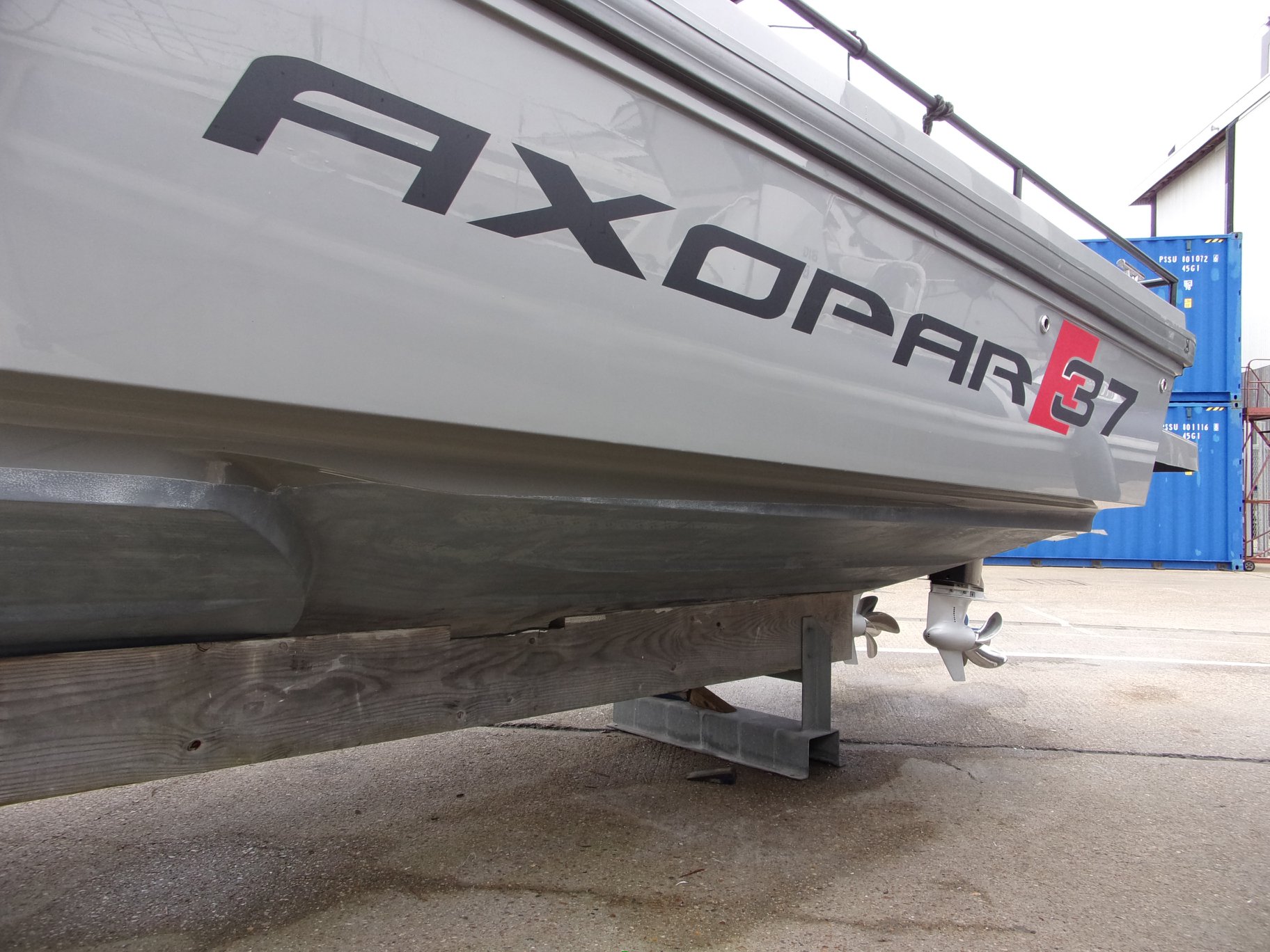
An Axopar 37 undergoing a Limited Outer Bottom Survey, the most brief type of survey that deals with the hull, coatings, structure and everything below the waterline.
Find example reports from Anchor House Marine Surveys and the full range of survey types offered here.
What considerations and advice would you give when buying abroad?
From a condition basis, all the above still applies as a yacht is still a yacht at the end of the day irrespective from where you buy it. However, how it's put together can also depend on the regulations of the country it was built in. For all yachts built in the UK and Europe after June 16th 1998, they follow the standards laid down in the Recreational Craft Directive (RCD) and yachts built in the USA after 1st February 1954 follow their own standards set down by the American Boat and Yacht Council (ABYC). Standards for both are fairly similar across the board but a European yacht built for the American market must conform to ABYC rules and vice versa. If you are looking at buying a boat or yacht from outside of European waters, then it will have to comply with European water rules and be retrofitted/updated accordingly to make sure it is up to current standards. As an example, a while ago I surveyed a 'Monterey' 245 imported from Florida in 2015 and this had been updated to comply with RCD rules and this included a new HIN (hull identification number) and a certificate to prove compliance. These are the types of issues you need to consider if buying from abroad.
Lastly, do you have any anecdotes that are worthwhile for buyers to learn from?
Something to consider - especially for motorboat purchases - is the condition of the engine(s). During the sea trial of a 'Fairline' Phantom 37, one of the diesel injectors from the port engine blew out during acceleration after its securing clip broke off. The only thing that stopped it flying off completely and spraying diesel everywhere was the fuel rail it was attached to, though this became heavily bent in the process. In addition, during the subsequent repair of this issue, it was then noted the exhaust manifolds had cracks in them. Two things can be taken away from this - a sea trial is always recommended in the same way that you wouldn't buy a car without test driving it first. Secondly, for larger engine installations and especially those without much service history, having the engines inspected by a competent engine specialist separately is recommended as well as oil sampling which will indicate if there is any excessive metal wear and / or seawater ingress. Most surveyors' engine inspections are limited to a visual check of the main components, all connections and lubricant, hydraulic fluids and coolant condition etc. Whilst this can be a fairly substantial inspection in its own right, a thorough independent inspection along with all the associated checks and tests are undertaken by a marine engineer can be worth its weight in gold.
Rupert Keyzar is an associate member of the International Institute of Marine Surveying (IIMS) and has a wealth of experience within the industry. To book your prospective vessel in for a survey get in contact here.
(function() { var qs,js,q,s,d=document, gi=d.getElementById, ce=d.createElement, gt=d.getElementsByTagName, id="typef_orm", b="https://embed.typeform.com/"; if(!gi.call(d,id)) { js=ce.call(d,"script"); js.id=id; js.src=b+"embed.js"; q=gt.call(d,"script")[0]; q.parentNode.insertBefore(js,q) } })()
